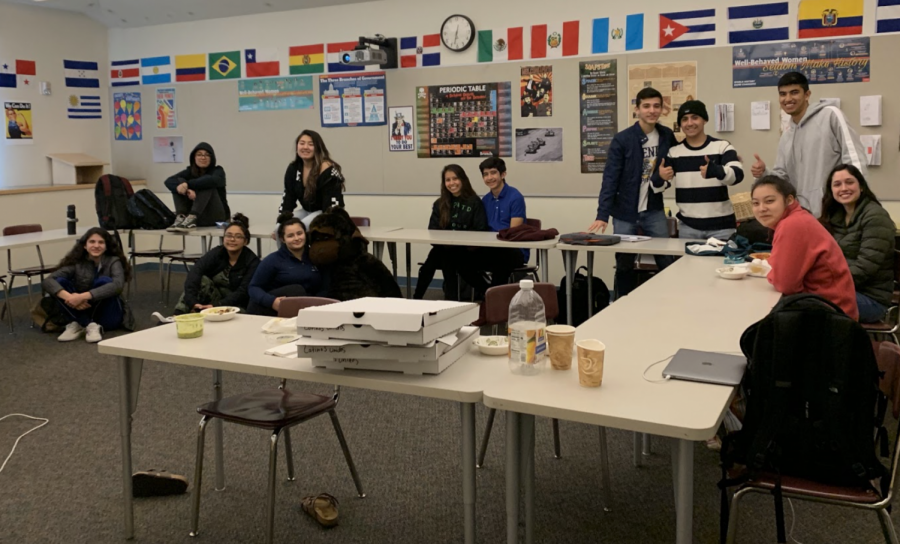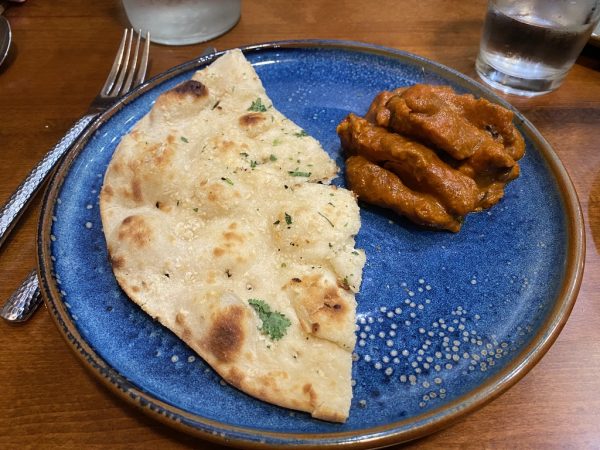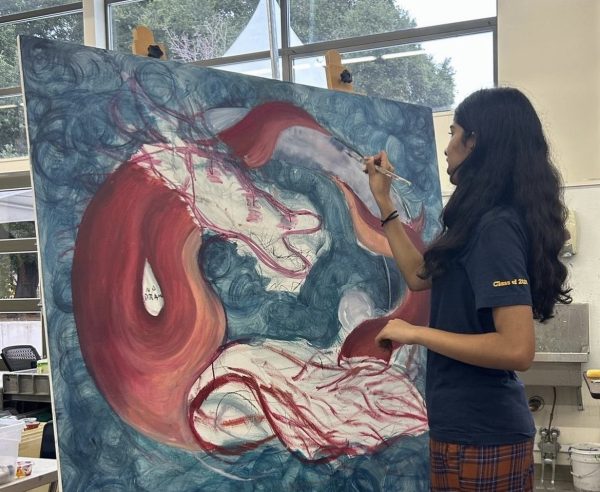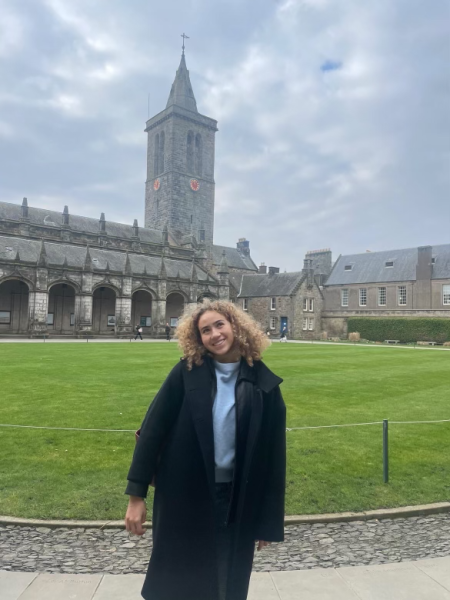What are Affinity Groups?
Latinos Unidos, the Latino affinity group, relaxes at their meeting by watching a movie and eating pizza. Staff Photo: Carly McAdam.
April 10, 2019
Affinity groups are fairly new at Menlo and have just begun meeting formally this year, according to science teacher Marc Allard, the faculty advisor for the Asian Pacific Islanders (API) group. Affinity groups are meant to provide a place for students of a certain race or ethnicity to gather together so that they can connect with others who share their affinity.
Affinity groups are a space for students to speak freely about any issues they are facing regarding their race or ethnicity that they may not feel comfortable discussing with other students. According to Allard, “it’s a space where [underrepresented people] feel like they can speak […] more candidly.” History teacher Carmen Borbón, the faculty advisor of the Latinos Unidos club, also feels that affinity groups give students a place where they can feel comfortable bringing up sensitive issues. “[It gives them] a place where they can talk about things that are bugging them in a place where they won’t feel judged or attacked for it,” Borbón said.
While students can feel safe talking about any serious issues in club, they can have fun too. According to API leader sophomore Egan Lai, “we talk and we have fun and it’s great, but if there’s ever anything serious we talk about that too.” Affinity group meetings are not usually strictly structured and are more centered around what students want to talk about. According to Allard, “we just get together and say, ‘hey, what’s new in the news?’ or ‘what’s going on culturally related to Asian Pacific Islanders?’” Affinity groups also give students a place to relax and de-stress from school.
Affinity groups can also help students learn more about their culture. For example, Diwali is a Hindu festival that many Asian Pacific Islanders celebrate. According to Allard, “not all of the students in API group know what Diwali is,” he said. “And so [API] is a great opportunity to learn about that.” Students can also explore what being a minority at Menlo means for them. “[Affinity groups] provide a place where non-white and maybe not upper-class people to talk about what it means to be here,” Lai saud. “[You] can learn more about what it means to be a certain identity.”
In addition to teaching students about their own culture, affinity groups are also starting to find ways to educate the entire school about different cultures. This year, there was a Lunar New Year assembly with presentations from student leaders of API, and there was a Martin Luther King Jr. Day assembly with presentations from students leaders of the Black Student Union. Affinity groups are hoping to do more assemblies like this in the future. “I feel like we should do more things like that [the MLK and Lunar New Year assemblies] because we live in a world where not everybody’s the same, right?” Borbón said. “At Menlo we’re a very insulated place, but when you go to college […] you’re going to find that you have classmates […] who may have very different beliefs and may look different. […] The more that you are exposed to different cultures and traditions, the better things are because I feel like a lot of prejudice comes from ignorance.”
Although they would like to do more, affinity groups have been successful so far at Menlo. Students in affinity groups feel like they have benefitted from them. One of the student leaders of Latinos Unidos, senior Santy Mendoza, said, “my freshman year, I didn’t really know any other Latinos, […] but now with affinity groups, I think it’s really accessible.” Affinity groups have given students a place to talk about serious issues, meet others who share their affinity, learn more about their culture and relax and have a good time. They have also helped educate Menlo students about other cultures and shown that Menlo values diversity and wants students of every affinity to feel at home in the community. Both the students involved in affinity groups and the faculty advisors hope that we will be seeing more from affinity groups in the future.













